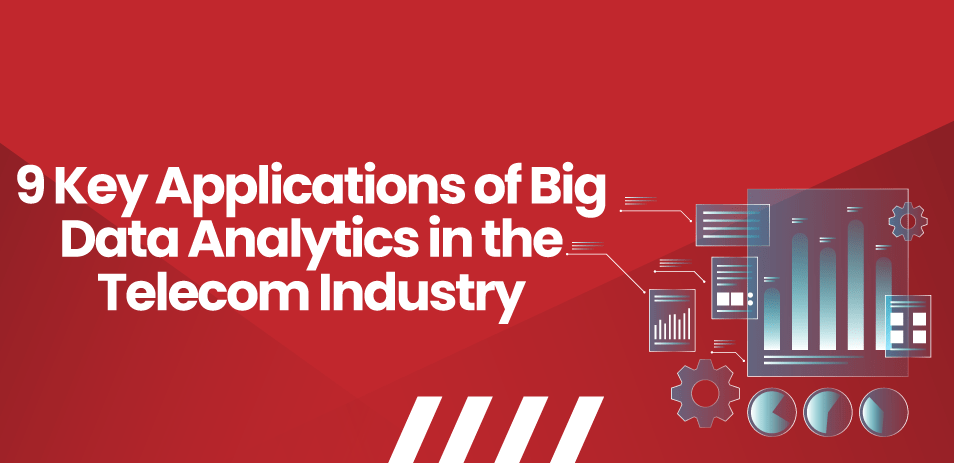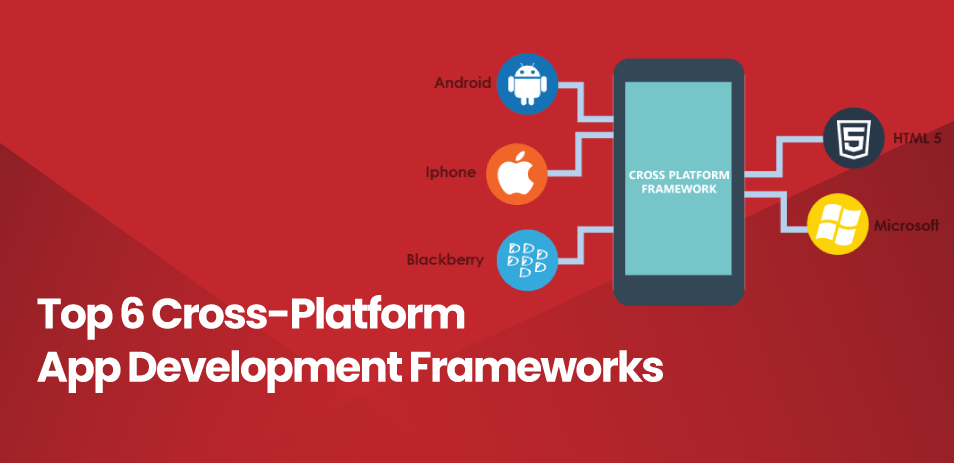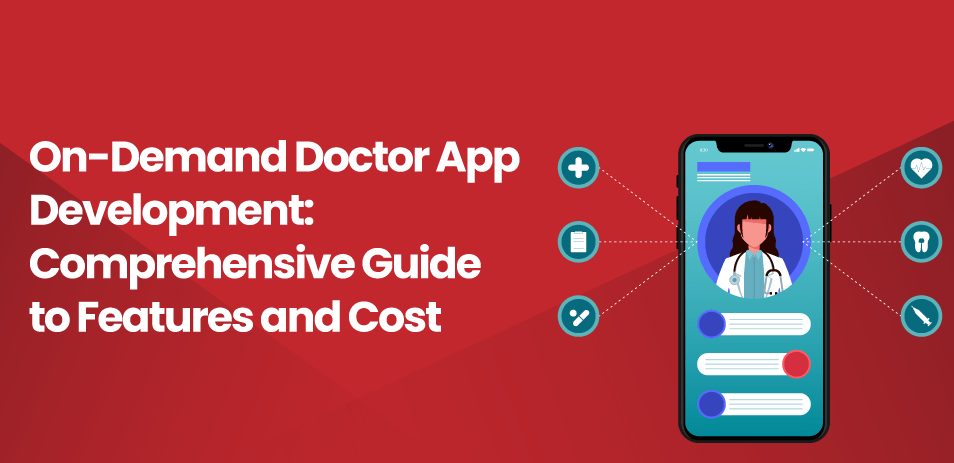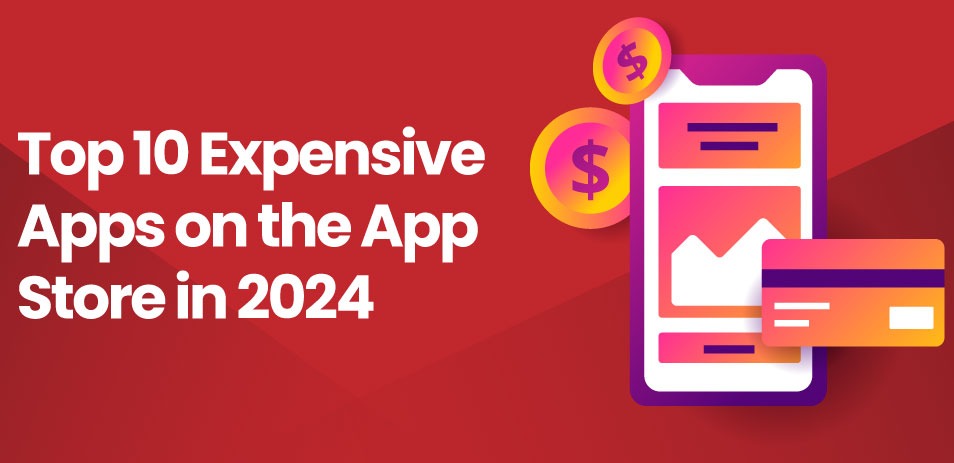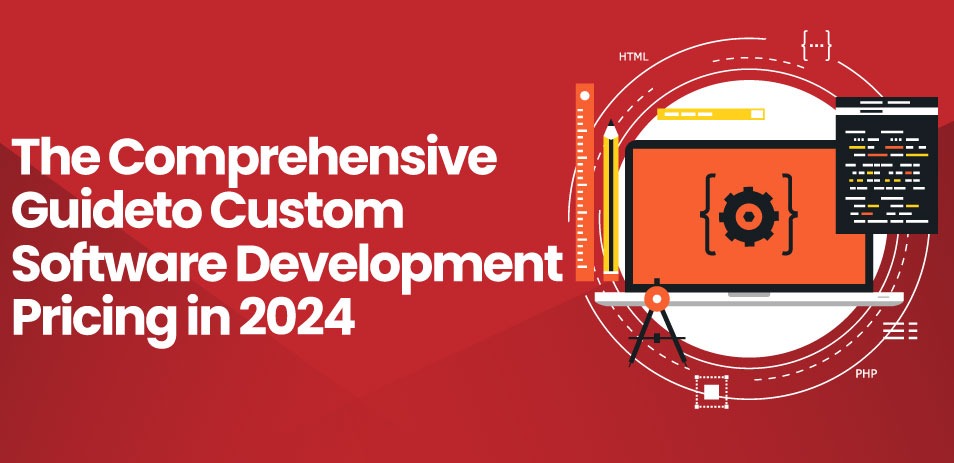Big data analytics has emerged as a powerful tool to harness this wealth of information, uncovering valuable insights and driving informed decision-making processes. Big data analytics refers to the process of examining large and varied data sets to uncover hidden patterns, correlations, and other valuable information. This analytical approach involves sophisticated algorithms, statistical techniques, and advanced computing capabilities to process, analyze, and interpret vast amounts of data in real-time or near-real-time.
In the telecom industry, where billions of interactions occur daily across networks and customer touchpoints, big data analytics plays a pivotal role in driving innovation, improving operational efficiency, and enhancing customer experiences. Telecom companies collect vast amounts of data from network operations, customer interactions, billing systems, and more. By harnessing this data effectively, telecom providers can gain valuable insights into customer behavior, network performance, market trends, and emerging opportunities.
Transform telecom with big data analytics. Unlock insights now!
Ready maximize telecom potential? Your custom app is just a click away.
Yes Let’s goThe primary objective of this blog is to delve into the top 9 use cases of big data analytics specifically tailored to the telecom industry.
1 Customer Segmentation and Personalization
In the fiercely competitive telecom industry, understanding customer preferences and behavior is paramount for delivering personalized experiences and driving customer loyalty. Big data analytics empowers telecom companies to segment their customer base effectively and tailor their services to meet individual needs and preferences.
Utilizing Demographic Data for Targeted Marketing
Demographic data, including age, gender, location, income level, and household size, provides valuable insights into the characteristics and preferences of different customer segments. Telecom companies leverage big data analytics to analyze demographic data and identify target audiences for their marketing campaigns. By understanding the unique needs and preferences of various demographic groups, telecom providers can create targeted marketing strategies to reach and engage their target customers effectively. For example, a telecom company may use demographic data to personalize promotional offers and advertisements based on the specific interests and lifestyles of different customer segments.
Tailoring Service Offerings Based on Behavior Analysis
In addition to demographic data, telecom companies collect vast amounts of data on customer behavior, including usage patterns, browsing history, and purchase behavior. Big data analytics enables telecom providers to analyze customer behavior data in real time and identify patterns and trends that can inform personalized service offerings. For instance, by analyzing customer usage patterns, telecom companies can identify customers who frequently use data-intensive applications such as video streaming or online gaming and tailor service plans to meet their needs. Similarly, by analyzing purchase behavior, telecom providers can recommend relevant add-on services or upgrades to customers based on their past usage and preferences.
Case Studies and Examples
AT&T’s Customer Segmentation Strategy
AT&T utilizes big data analytics to segment its customer base and personalize its marketing efforts. By analyzing demographic and behavioral data, AT&T identifies target customer segments and tailors its promotional offers and advertisements accordingly. For example, AT&T may offer discounted data plans to customers who frequently stream video content based on their past usage patterns.
Verizon’s Personalized Service Offerings
Verizon leverages big data analytics to analyze customer behavior and offer personalized service recommendations. By analyzing usage patterns and preferences, Verizon identifies opportunities to upsell additional services or features to customers. For instance, Verizon may recommend a higher-tier data plan to customers who consistently exceed their data usage limits based on their past usage behavior.
T-Mobile’s Targeted Marketing Campaigns
T-Mobile uses big data analytics to target its marketing campaigns to specific demographic groups. By analyzing demographic data and customer preferences, T-Mobile identifies target audiences for its promotional offers and tailors its marketing messages accordingly. For example, T-Mobile may launch a promotional campaign targeting young professionals in urban areas, offering discounted data plans and exclusive perks tailored to their lifestyle.
2 Predictive Maintenance
Predictive maintenance stands as a pivotal strategy in the arsenal of telecom companies striving to ensure the seamless operation of their network infrastructure. Leveraging big data analytics, telecom operators can transition from reactive to proactive maintenance approaches, thereby significantly reducing downtime and enhancing operational efficiency.
Using Data Analytics for Proactive Network Maintenance
In the traditional maintenance paradigm, telecom companies often react to equipment failures after they occur, leading to service disruptions and increased operational costs. However, with big data analytics, telecom operators can proactively monitor their network infrastructure in real time. By analyzing vast amounts of network performance data, anomalies, and degradation can be detected early on, enabling proactive measures to be taken to prevent potential issues. For example, data analytics algorithms can identify patterns indicative of equipment degradation or impending failures, allowing for timely interventions to optimize network performance and prevent downtime.
Predicting Equipment Failures to Minimize Downtime
Predictive maintenance employs advanced analytics techniques to forecast equipment failures based on historical data, sensor readings, and machine learning algorithms. By analyzing historical performance data and identifying patterns that precede equipment failures, telecom companies can predict potential issues before they escalate. For instance, predictive maintenance algorithms can analyze sensor data from network equipment to detect abnormalities or deviations from expected behavior, signaling potential failure risks. By predicting equipment failures in advance, telecom operators can schedule maintenance activities proactively, minimizing downtime and reducing service disruptions for customers.
Real-World Implementations and Results
Telefonica’s Predictive Maintenance Success
Telefonica, a leading telecom operator, implemented a predictive maintenance program powered by big data analytics. By analyzing network performance data and utilizing machine learning algorithms, Telefonica can predict equipment failures before they occur. This proactive approach has enabled Telefonica to reduce downtime significantly, leading to improved network reliability and enhanced customer satisfaction.
AT&T’s Data-Driven Maintenance Strategy
AT&T has embraced predictive maintenance as a core component of its operational strategy. By leveraging big data analytics to analyze network performance data and identify potential failure patterns, AT&T can schedule maintenance activities proactively. As a result, AT&T has achieved notable reductions in downtime and service disruptions, ensuring uninterrupted connectivity for its customers.
Vodafone’s Proactive Network Management
Vodafone utilizes predictive maintenance techniques to optimize the performance of its network infrastructure. By analyzing real-time data from network equipment and leveraging predictive analytics algorithms, Vodafone can anticipate potential issues and take preventive actions to mitigate risks. This proactive approach has enabled Vodafone to enhance network reliability and deliver superior service experiences to its customers.
3 Network Optimization
Network optimization stands as a cornerstone for telecom companies aiming to enhance service quality, maximize efficiency, and meet the ever-growing demands of users. Through the utilization of big data analytics, telecom operators can employ sophisticated algorithms to analyze network data comprehensively, identify optimization opportunities, and ensure the seamless functioning of their infrastructure.
Analyzing Network Traffic Patterns for Optimal Resource Allocation
Understanding network traffic patterns is crucial for effective resource allocation and capacity planning. Big data analytics enables telecom companies to analyze vast amounts of network data in real time, identifying peak usage periods, traffic hotspots, and potential bottlenecks. By leveraging this insight, operators can allocate resources dynamically, optimizing network performance and ensuring a consistent quality of service for users. For example, during peak hours, resources can be redistributed to areas experiencing high demand, mitigating congestion and improving user experience.
Enhancing Coverage and Capacity Based on Data Insights
Data analytics provides telecom operators with actionable insights into network coverage and capacity requirements. By analyzing demographic data, usage patterns, and geographical information, operators can identify underserved areas and areas experiencing high demand. This information allows operators to deploy additional infrastructure strategically, expanding coverage and capacity where needed most. Additionally, predictive analytics can forecast future capacity requirements, enabling operators to plan network upgrades and expansions proactively. This proactive approach ensures that network capacity remains ahead of growing demand, minimizing congestion and providing a seamless user experience.
Real-world Implementations and Results
Verizon’s Dynamic Resource Allocation
Verizon utilizes big data analytics to analyze network traffic patterns and allocate resources dynamically. By continuously monitoring network performance metrics and user behavior, Verizon can adjust resource allocation in real-time, optimizing network efficiency and ensuring a consistent quality of service. This dynamic approach enables Verizon to handle fluctuations in demand effectively, delivering reliable connectivity experiences to users.
China Mobile’s Geospatial Analysis for Coverage Optimization
China Mobile employs geospatial analysis techniques to optimize network coverage and capacity. By analyzing geographical data, population density, and user distribution, China Mobile identifies underserved areas and strategically deploys additional infrastructure to improve coverage and capacity. This data-driven approach has enabled China Mobile to enhance network reliability and expand its user base, particularly in rural and remote areas.
Telefonica’s Predictive Capacity Planning
Telefonica leverages predictive analytics to forecast future capacity requirements and plan network expansions proactively. By analyzing historical data, user trends, and market projections, Telefonica can anticipate future demand and invest in infrastructure upgrades accordingly. This proactive capacity planning ensures that Telefonica’s network remains scalable and resilient, accommodating growing user demand and delivering superior connectivity experiences.
4 Fraud Detection and Prevention
Fraudulent activities pose significant risks to telecom companies, leading to financial losses and reputational damage. Big data analytics plays a crucial role in detecting and preventing fraud by analyzing vast amounts of data to identify suspicious patterns and behaviors in real time.
Identifying Suspicious Activities Through Data Analytics
Big data analytics enables telecom companies to analyze diverse data sources, including call records, billing information, and user behavior, to identify potential fraudulent activities. By employing advanced analytics techniques, such as anomaly detection and pattern recognition, telecom operators can flag suspicious behaviors indicative of fraud. For example, unusual call patterns, such as a sudden spike in international calls or calls to premium rate numbers, may signal fraudulent activities like SIM card cloning or toll fraud. By analyzing these patterns in real time, operators can take immediate action to investigate and prevent fraudulent activities before they escalate.
Implementing Real-Time Monitoring Systems for Fraud Prevention
Real-time monitoring systems powered by big data analytics enable telecom companies to detect and respond to fraudulent activities as they occur. By continuously monitoring network traffic, transactions, and user interactions, operators can identify anomalies and deviations from normal behavior in real time. For instance, real-time monitoring systems can detect unauthorized access attempts, suspicious call patterns, or unusual billing activities, triggering immediate alerts for further investigation. Additionally, machine learning algorithms can be employed to analyze historical fraud patterns and predict future fraudulent activities, enabling proactive fraud prevention measures.
Notable Instances of Fraud Detection Success Stories
AT&T’s Fraud Detection System
AT&T employs a sophisticated fraud detection system powered by big data analytics to identify and prevent fraudulent activities across its network. By analyzing call records, billing data, and user behavior in real time, AT&T can detect suspicious activities, such as SIM card cloning or identity theft, and take immediate action to mitigate risks. This proactive approach has enabled AT&T to reduce fraud-related losses and enhance customer trust and satisfaction significantly.
Vodafone’s Real-Time Fraud Monitoring
Vodafone utilizes real-time fraud monitoring systems to detect and prevent fraudulent activities across its global network. By continuously analyzing network traffic and transaction data, Vodafone can identify anomalies and unusual patterns indicative of fraud in real time. This proactive approach enables Vodafone to take immediate action to block fraudulent transactions, protect customer accounts, and minimize financial losses.
Verizon’s Predictive Fraud Analytics
Verizon leverages predictive analytics to anticipate and prevent fraudulent activities before they occur. By analyzing historical fraud patterns and identifying emerging trends, Verizon can proactively implement fraud prevention measures and strengthen security controls. This proactive approach has enabled Verizon to stay ahead of evolving fraud schemes, minimize risks, and protect its customers and assets effectively.
5 Churn Prediction and Management
Churn, or customer attrition, represents a significant challenge for telecom companies, impacting revenue and profitability. Big data analytics enables telecom operators to predict and manage churn effectively by analyzing customer behavior, identifying at-risk customers, and implementing targeted retention strategies.
Analyzing Customer Behavior to Forecast Churn Likelihood
Big data analytics empowers telecom companies to analyze vast amounts of customer data to identify patterns and trends indicative of potential churn. By examining factors such as usage patterns, billing history, customer interactions, and demographic information, operators can develop predictive models to forecast churn likelihood accurately. For example, customers exhibiting declining usage, frequent complaints, or overdue payments may be identified as at risk for churn. By leveraging machine learning algorithms and predictive analytics techniques, telecom companies can identify early warning signs of churn and take proactive measures to retain valuable customers.
Implementing Retention Strategies Based on Predictive Insights
Armed with predictive insights generated by big data analytics, telecom companies can implement targeted retention strategies to mitigate churn risks and retain customers. These strategies may include personalized offers, loyalty programs, proactive outreach campaigns, and service enhancements tailored to individual customer needs and preferences. For example, telecom operators may offer discounts or incentives to customers identified as at risk for churn, incentivizing them to stay with the company. Additionally, proactive customer engagement initiatives, such as personalized recommendations or proactive customer support, can help strengthen customer relationships and reduce churn.
Case Studies Demonstrating Effective Churn Reduction Techniques
T-Mobile’s Churn Reduction Initiative
T-Mobile leverages big data analytics to predict and manage churn effectively. By analyzing customer data and identifying at-risk segments, T-Mobile implements targeted retention strategies, such as personalized offers and proactive customer outreach. This proactive approach has enabled T-Mobile to reduce churn rates significantly and enhance customer retention.
Verizon’s Personalized Retention Campaigns
Verizon utilizes big data analytics to develop personalized retention campaigns aimed at reducing churn. By analyzing customer behavior and preferences, Verizon identifies at-risk customers and tailors retention offers and incentives to address their specific needs. This targeted approach has proven effective in reducing churn rates and increasing customer loyalty.
AT&T’s Predictive Churn Modeling
AT&T employs predictive churn modeling techniques to forecast churn likelihood accurately. By analyzing historical customer data and identifying churn predictors, AT&T develops predictive models to anticipate churn risks and implement proactive retention strategies. This data-driven approach has enabled AT&T to reduce churn rates and improve overall customer satisfaction.
Prioritize Churn Prevention Today!
Contact us now to schedule a consultation and learn how our predictive insights can help you retain valuable customers and boost profitability.
Yes Let’s go6 Pricing and Revenue Management
Pricing and revenue management are critical components of telecom companies’ business strategies, influencing profitability, competitiveness, and customer satisfaction. Big data analytics enables telecom operators to implement dynamic pricing strategies, optimize revenue streams, and drive profitability through data-driven pricing models.
Dynamic Pricing Strategies Based on Demand and Usage Patterns
Big data analytics empowers telecom companies to implement dynamic pricing strategies that adjust prices based on demand and usage patterns in real time. By analyzing vast amounts of customer data, including usage trends, geographic location, and purchasing behavior, operators can identify price-sensitive segments and tailor pricing plans accordingly. For example, during periods of high demand, telecom operators may increase prices for data-intensive services to maximize revenue while offering discounts or promotions during off-peak hours to incentivize usage. This dynamic pricing approach enables operators to align prices with market demand, optimize revenue, and enhance competitiveness.
Optimizing Revenue Streams Through Data-Driven Pricing Models
Data-driven pricing models leverage advanced analytics techniques to optimize pricing strategies and maximize revenue opportunities. By analyzing customer data, market trends, and competitive dynamics, telecom operators can develop pricing models that balance revenue maximization with customer value proposition. For instance, telecom companies may employ predictive analytics to forecast demand and adjust prices dynamically to capitalize on revenue opportunities. Additionally, segmentation analysis enables operators to tailor pricing plans to meet the diverse needs and preferences of different customer segments, optimizing revenue streams and profitability.
Examples of Successful Revenue Management Initiatives
AT&T’s Usage-Based Pricing Plans
AT&T utilizes big data analytics to implement usage-based pricing plans tailored to individual customer needs. By analyzing usage patterns and customer preferences, AT&T offers tiered pricing plans that align with customers’ usage levels, ensuring fair pricing and maximizing revenue. This data-driven pricing approach has enabled AT&T to optimize revenue streams and enhance customer satisfaction.
Verizon’s Dynamic Pricing Strategy
Verizon employs dynamic pricing strategies based on real-time demand and usage patterns. By leveraging big data analytics to monitor network traffic and customer behavior, Verizon adjusts prices dynamically to match fluctuating demand levels. This dynamic pricing approach enables Verizon to maximize revenue while maintaining competitive pricing in the market.
T-Mobile’s Personalized Pricing Offers
T-Mobile leverages customer data and predictive analytics to offer personalized pricing offers tailored to individual customer needs. By analyzing customer behavior and preferences, T-Mobile identifies opportunities to offer targeted discounts, promotions, and incentives, optimizing revenue and enhancing customer loyalty.
7 Network Security
Network security is of paramount importance in the telecom industry, given the sensitivity and value of the data transmitted over telecommunications networks. Big data analytics serves as a powerful tool for identifying and mitigating security threats, enhancing cybersecurity measures, and safeguarding network integrity and data confidentiality.
Utilizing Big Data Analytics to Identify and Mitigate Security Threats
Big data analytics enables telecom companies to analyze vast amounts of network traffic data in real time to detect and mitigate security threats effectively. By monitoring network traffic patterns, analyzing behavior anomalies, and correlating security events, operators can identify potential security breaches and take immediate action to mitigate risks. For example, data analytics algorithms can detect unusual network activity indicative of a distributed denial-of-service (DDoS) attack or malware infection, enabling operators to implement countermeasures to mitigate the impact and prevent further damage.
Enhancing Cybersecurity Measures Through Predictive Analytics
Predictive analytics techniques leverage historical data and machine learning algorithms to forecast future security threats and proactively enhance cybersecurity measures. By analyzing historical security incidents, identifying attack patterns, and predicting potential vulnerabilities, telecom operators can develop proactive strategies to strengthen their security posture. For instance, predictive analytics can identify emerging cyber threats and anticipate attack vectors, enabling operators to implement preemptive security controls and fortify network defenses against potential threats.
Notable Instances of Data-Driven Security Enhancements
Verizon’s Threat Intelligence Platform
Verizon utilizes big data analytics to power its Threat Intelligence Platform, which aggregates and analyzes security data from diverse sources to identify and mitigate security threats. By correlating security events across multiple networks and industries, Verizon can identify emerging threats and provide actionable intelligence to its customers to enhance their cybersecurity defenses effectively.
AT&T’s Security Analytics Center
AT&T operates a Security Analytics Center that leverages big data analytics to monitor and analyze network traffic for security threats in real time. By employing advanced analytics techniques, such as machine learning and anomaly detection, AT&T can detect and respond to security incidents promptly, minimizing the impact on its customers and network infrastructure.
Telefonica’s Cybersecurity Operations Center
Telefonica operates a Cybersecurity Operations Center (SOC) that utilizes big data analytics to detect and mitigate security threats across its global network infrastructure. By analyzing network traffic, log data, and security events in real-time, Telefonica’s SOC can identify potential security breaches and respond swiftly to mitigate risks, ensuring the integrity and confidentiality of its network and data.
8 Customer Experience Enhancement
Customer experience is a key differentiator for telecom companies in a highly competitive market. Big data analytics empowers telecom operators to gather insights from customer feedback data, personalize interactions, and ultimately enhance customer satisfaction.
Gathering and Analyzing Customer Feedback Data for Service Improvement
Utilizing big data analytics, telecom companies can gather and analyze customer feedback data from various sources such as surveys, social media, and customer support interactions. By applying sentiment analysis and natural language processing techniques, operators can extract valuable insights from this data to identify areas for service improvement. For example, sentiment analysis algorithms can categorize customer feedback as positive, neutral, or negative, enabling operators to pinpoint specific pain points and prioritize service enhancements accordingly. By acting upon customer feedback insights, telecom companies can continuously refine their services to meet customer expectations better and enhance overall satisfaction.
Personalizing Customer Interactions Through Data Insights
Big data analytics enables telecom operators to personalize customer interactions by leveraging insights from customer data. By analyzing historical usage patterns, preferences, and behavior data, operators can tailor their communications and offerings to individual customer needs and preferences. For instance, telecom companies can send targeted promotions, recommendations, and notifications based on customers’ usage habits and interests. By personalizing customer interactions, operators can create more meaningful and engaging experiences, fostering stronger customer relationships and increasing satisfaction and loyalty.
Case Studies Showcasing Enhanced Customer Satisfaction
T-Mobile’s Customer Feedback Analysis
T-Mobile utilizes big data analytics to gather and analyze customer feedback data from various channels, including social media, surveys, and customer support interactions. By applying sentiment analysis algorithms to this data, T-Mobile identifies key areas for service improvement and implements targeted initiatives to address customer concerns. This data-driven approach has enabled T-Mobile to enhance customer satisfaction levels and differentiate itself in the highly competitive telecom market.
Verizon’s Personalized Customer Interactions
Verizon leverages data insights to personalize customer interactions and communications effectively. By analyzing customer data, including usage patterns and preferences, Verizon tailors its marketing campaigns, offers, and communications to individual customer needs and interests. This personalized approach has led to increased customer engagement and satisfaction, as customers receive relevant and timely communications that resonate with their preferences.
AT&T’s Customer Experience Enhancements
AT&T utilizes big data analytics to improve the customer experience across its service offerings continuously. By gathering and analyzing customer feedback data, AT&T identifies pain points and areas for improvement, such as network coverage and service quality. By addressing these concerns and implementing targeted initiatives, AT&T has been able to enhance overall customer satisfaction and loyalty.
9 Regulatory Compliance
In the telecom industry, compliance with regulatory requirements is essential to ensure the protection of consumer rights, privacy, and data security. Big data analytics plays a crucial role in helping telecom operators ensure compliance with regulatory standards, monitor data privacy and security, and implement effective compliance initiatives.
Ensuring Compliance with Regulatory Requirements Through Data Analytics
Telecom companies utilize big data analytics to ensure compliance with regulatory requirements by analyzing vast amounts of data related to regulatory standards and guidelines. By leveraging advanced analytics techniques, operators can identify areas of non-compliance and assess the effectiveness of their compliance efforts. For example, data analytics can be used to monitor adherence to regulatory guidelines related to pricing transparency, network neutrality, and consumer protection. By analyzing data on pricing structures, service offerings, and customer complaints, operators can ensure compliance with regulatory requirements and avoid potential penalties or fines.
Monitoring and Reporting on Data Privacy and Security Standards
Data privacy and security are paramount concerns for telecom companies, given the sensitive nature of customer information and communication data. Big data analytics enables operators to monitor and report on data privacy and security standards effectively. By analyzing network traffic, access logs, and security events, operators can detect and mitigate potential security threats, such as unauthorized access or data breaches. Additionally, analytics can be used to track compliance with data privacy regulations, such as the General Data Protection Regulation (GDPR) or the California Consumer Privacy Act (CCPA), by monitoring data handling practices and ensuring appropriate data protection measures are in place.
Examples of Regulatory Compliance Initiatives Driven by Big Data Analytics
Compliance with GDPR Requirements
Telecom companies leverage big data analytics to ensure compliance with the GDPR, which imposes strict regulations on the handling and processing of personal data. By analyzing customer data and monitoring data processing activities, operators can ensure compliance with GDPR requirements, such as obtaining consent for data processing, implementing data protection measures, and responding to data subject requests.
Monitoring Compliance with Network Neutrality Regulations
Big data analytics enables operators to monitor compliance with network neutrality regulations, which prohibit discriminatory treatment of internet traffic. By analyzing network traffic patterns and monitoring traffic management practices, operators can ensure compliance with network neutrality requirements and prevent the prioritization or blocking of specific types of internet traffic.
Enhancing Data Security and Privacy
Telecom companies utilize big data analytics to enhance data security and privacy by monitoring and analyzing security events, detecting anomalies, and identifying potential security threats. By implementing advanced security analytics solutions, operators can proactively identify and mitigate security risks, ensuring the confidentiality, integrity, and availability of customer data.
Conclusion
The integration of big data analytics has revolutionized various facets of the telecom industry, from enhancing customer experiences to ensuring regulatory compliance and optimizing network operations. By harnessing the power of big data analytics, telecom companies can unlock valuable insights from vast volumes of data, enabling them to make data-driven decisions, anticipate customer needs, and stay ahead in a competitive market landscape. Moreover, big data analytics empowers telecom operators to predict and prevent network issues, mitigate security threats, and implement targeted initiatives to drive customer satisfaction and loyalty.
In parallel, the synergy between big data analytics and emerging technologies like artificial intelligence and machine learning continues to redefine the possibilities within the telecom sector, paving the way for innovation and growth. Looking ahead, the role of big data analytics will only continue to expand, shaping the future of telecommunications and propelling the industry toward new heights of success. For telecom companies seeking to thrive in this dynamic landscape, embracing big data analytics is not just a choice but a necessity. Partnering with a reputable mobile app development company in Dallas can further amplify the benefits of big data analytics, enabling telecom operators to leverage cutting-edge technologies and deliver exceptional experiences to their customers.

